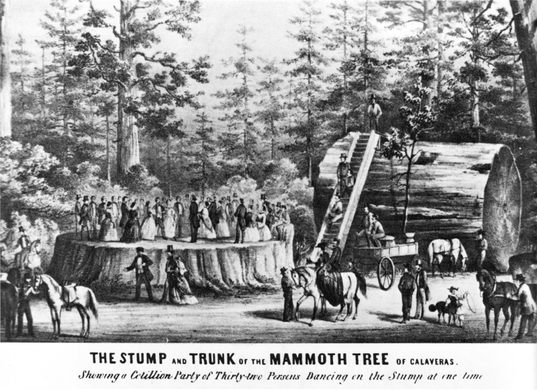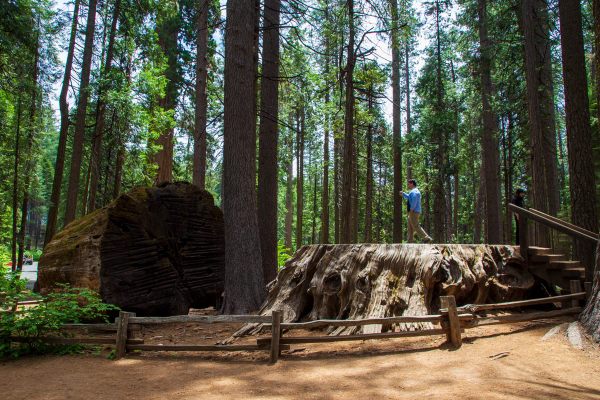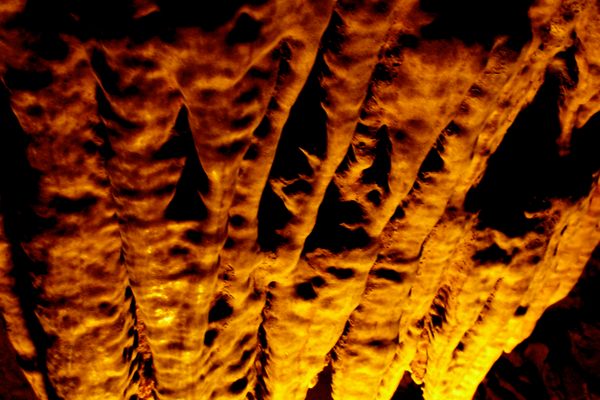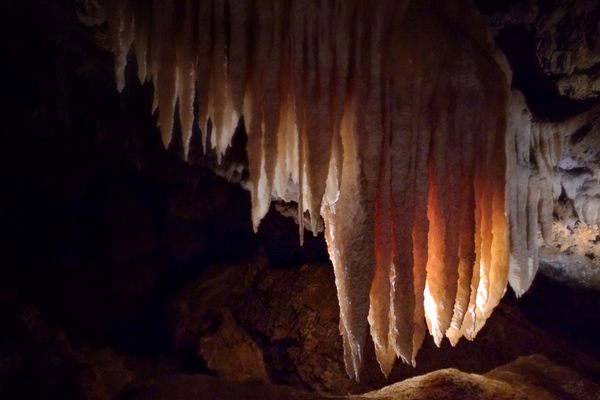AO Edited
The Discovery Tree
California's longest-running tourist attraction is a stump.
In 1852 a hunter, Augustus T. Dowd, was tracking a large grizzly bear when he discovered something more immense, a Giant Sequoia tree. When word got out, many visitors flocked to the area, although much of the outside world remained skeptical about the find. In 1853, the tree was cut down and stripped of its bark, so it could be transported and put on exhibition.
Since there were no saws large enough to cut through a tree of that size, a group of five men spent 22 days boring through the tree with augers. The tree was over 25 feet in diameter, 280 feet tall, and 1,244 years old when felled. The stump was used as a dance floor, a bar, and even a two-lane bowling alley. Tourists flocked to see the immense stump and the other enormous sequoias, known as the Calaveras Big Trees. Some of those early visitors carved their initials in the trunk, many of which are visible today.
Of course, cutting such a tree drew a public outcry. John Muir exclaimed, “Then the vandals danced upon the stump!” In 1864, the Discovery Tree was cited as an example of the need for preservation when the Yosemite Grant was introduced to congress.
Although the Calaveras land was owned by logging interests, public protest stayed the lumberjacks’ saws. In 1931, the land was purchased by the State of California. Since its discovery in 1852, Calaveras Big Trees continues to be the longest-running tourist attraction in the state.
This 6,500-acre park is home to several giant sequoias as well as a wide variety of other wildlife. There are miles of guided trails highlighting this unique ecosystem.


















Follow us on Twitter to get the latest on the world's hidden wonders.
Like us on Facebook to get the latest on the world's hidden wonders.
Follow us on Twitter Like us on Facebook